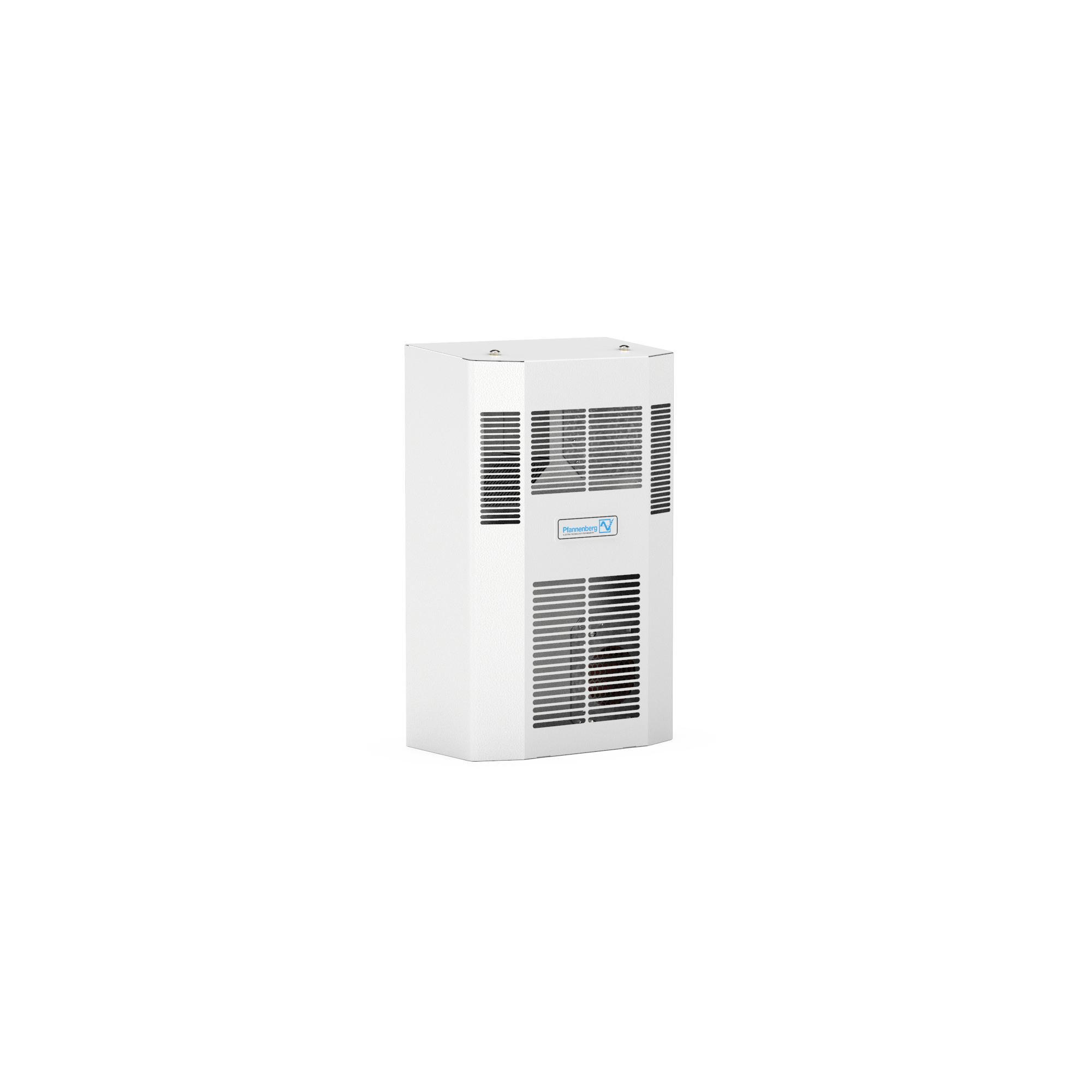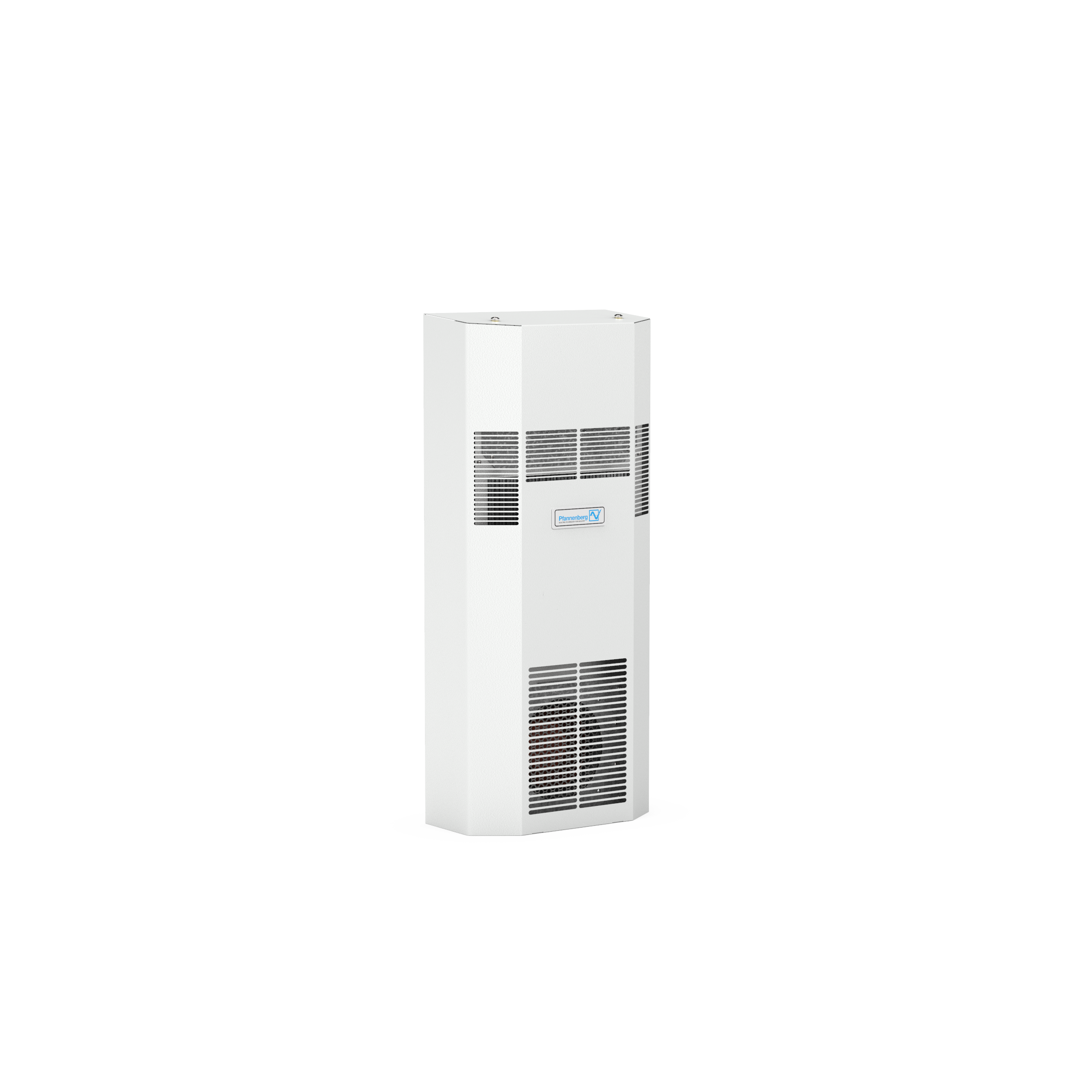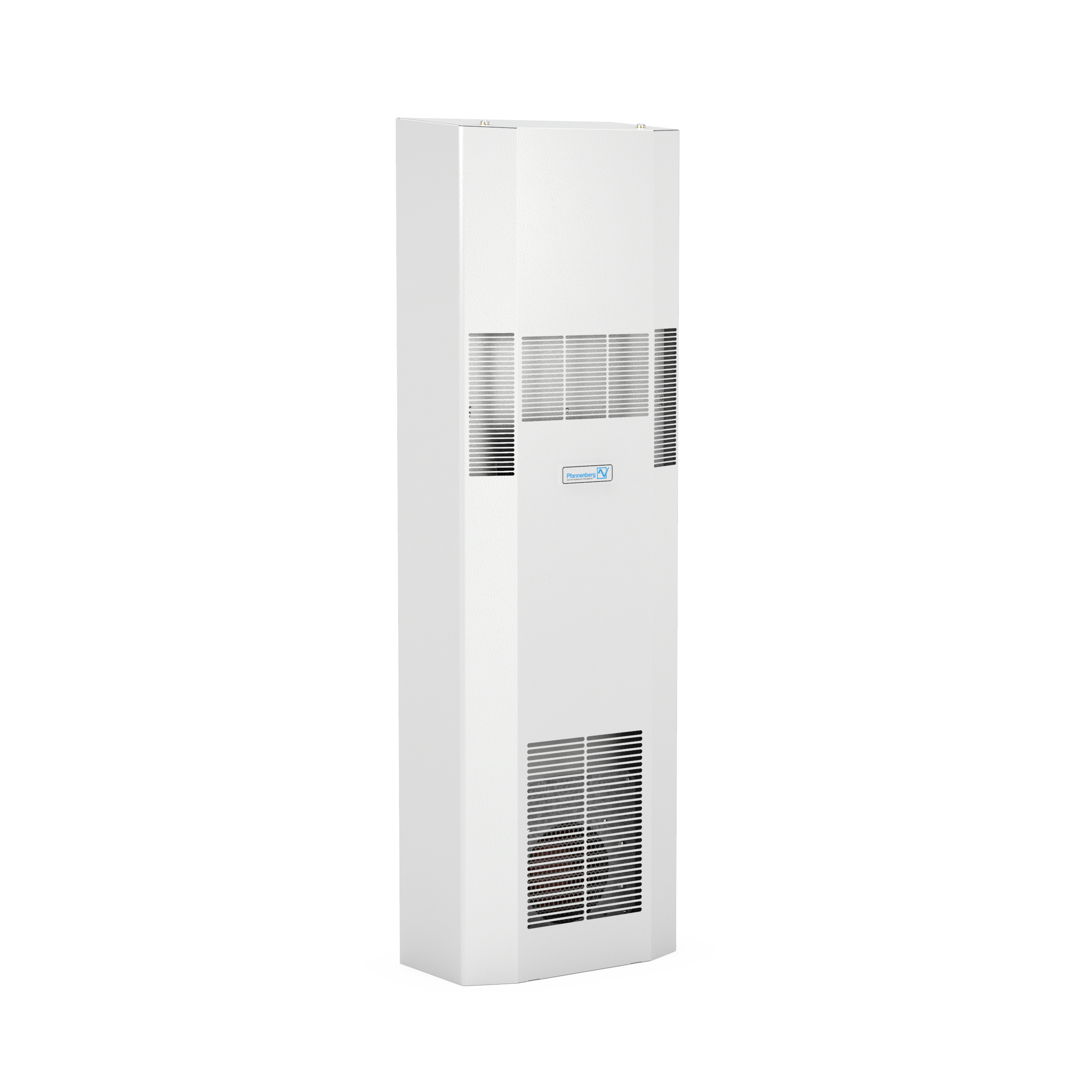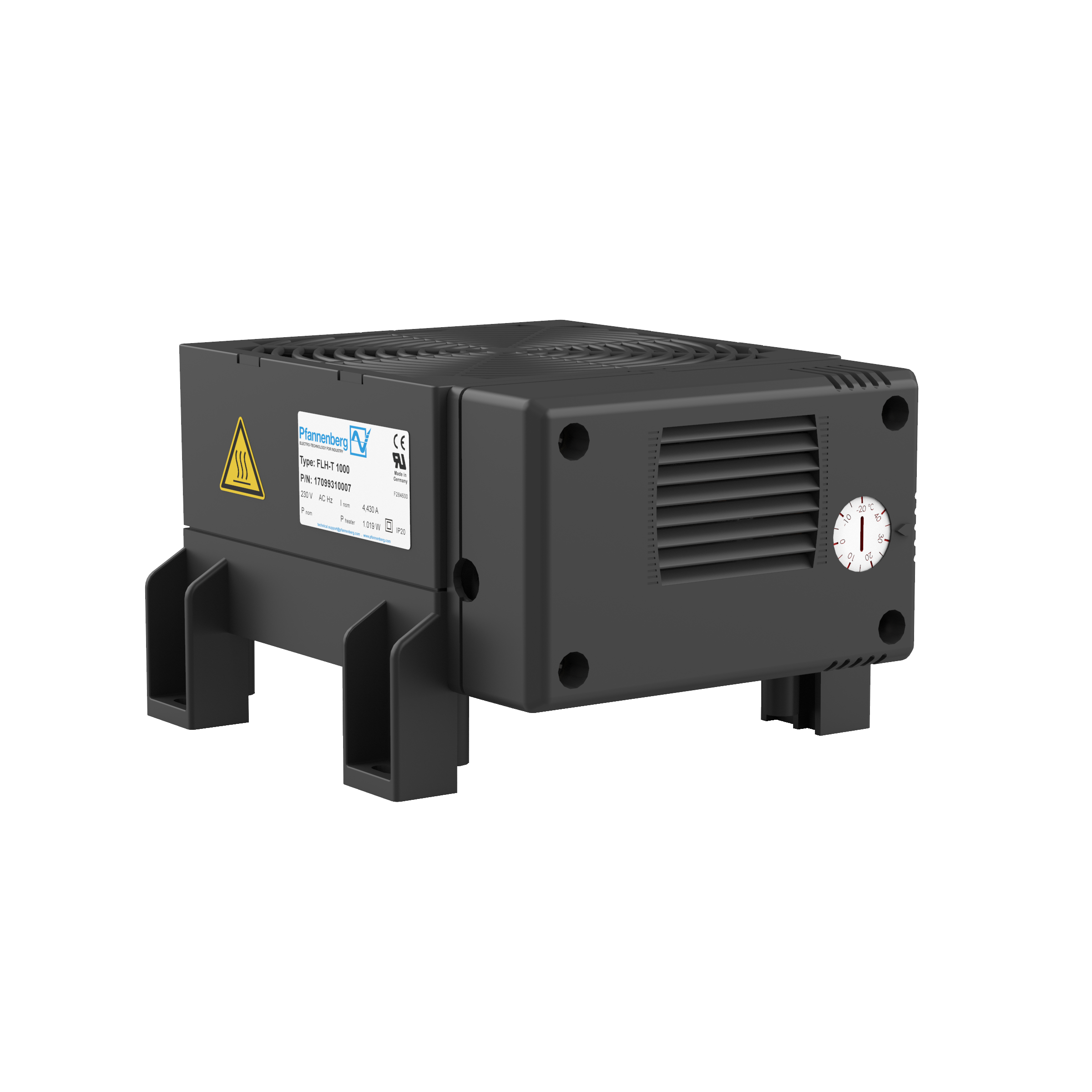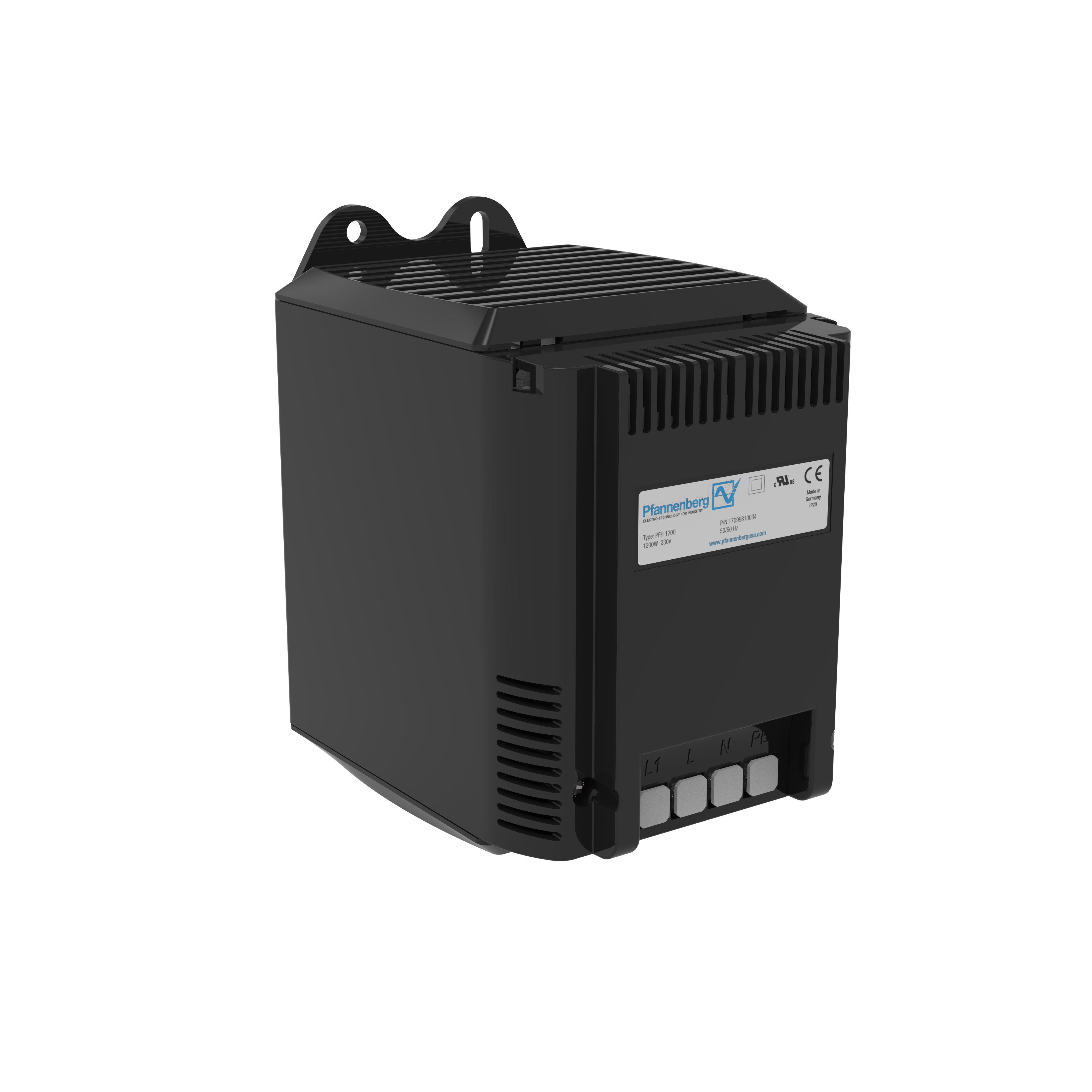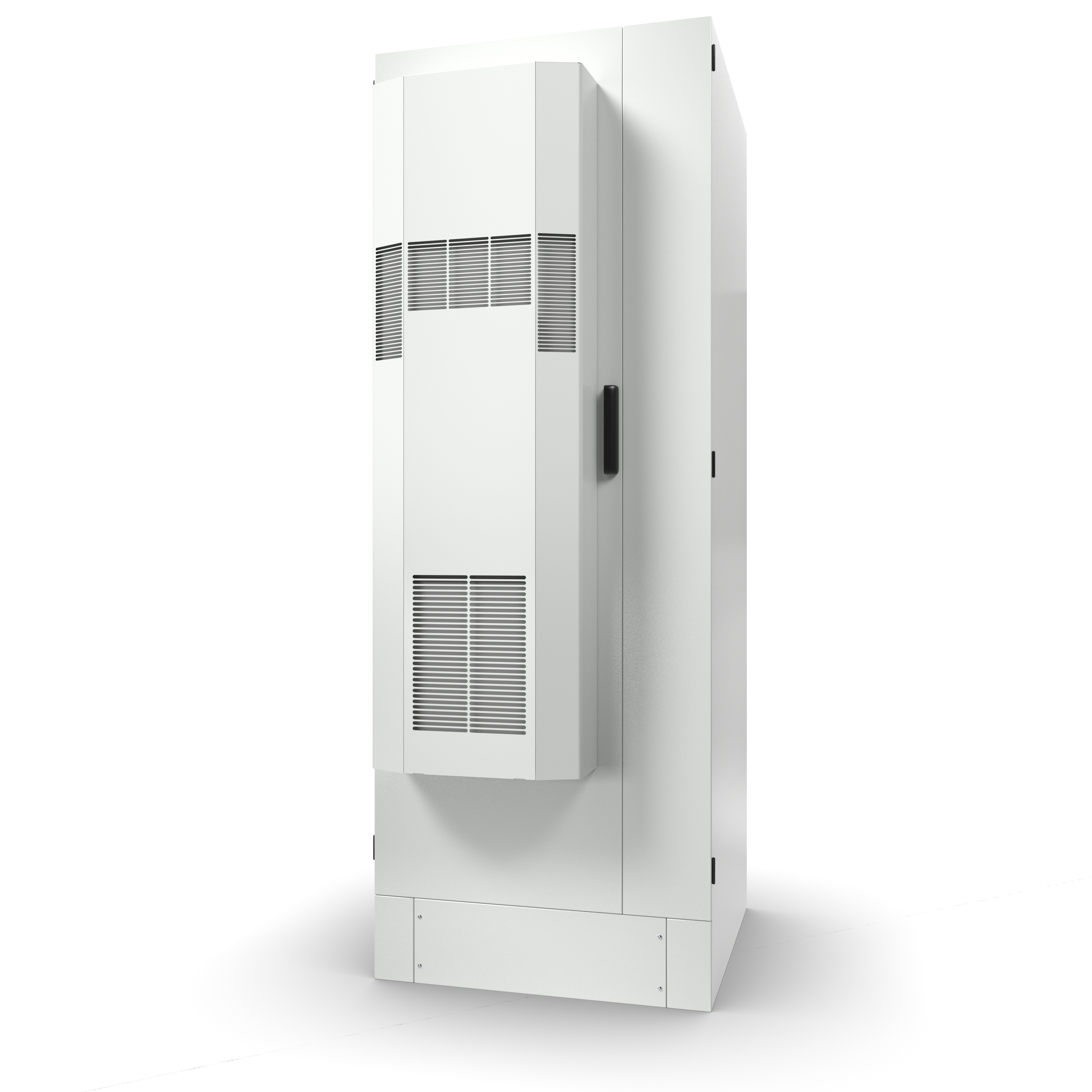
Closed loop design
The external and internal air circuits are isolated from each other in order to form a hermetic seal between the interior of the electrical enclosure and environmental influences. Like this, it seals against gaseous substances, humidity and airborne particulates such as dust, keeping it away from sensitive components within the electrical enclosure.
Further benefits at a glance:
- Utilizes lower temperature ambient air to cool warmer internal air without an active component such as a compressor which consumes high amounts of energy
- With only two mechanical components (fans), potential failure point is reduced to ensure continuous uptime of your processes
- The lightweight design allows an easy installation and flexible mounting options are given, too
Revolutionary cooling solution
Pfannenberg’s
air to air heat exchangers
use a revolutionary next generation cooling technology that out-performs conventional heat exchangers and/or heat pipe solutions. One of the best technologies to use when there is a temperature difference between the internal target temperature and the surrounding temperature (∆T≥10°C) is air to air technology.
An air to air heat exchanger removes heat from inside of the enclosure to the cooler environment using the least amount of energy while still providing a closed loop ingress protection.
Technology comparison
To better understand the advantages of our air to air heat exchangers let’s take a look at how it compares to a traditional cooling unit. AC/Cooling units are typically the go to solution for cooling an enclosure. What many people fail to consider is that a cooler ambient environment could be used to help cool your warmer electrical enclosure. This new air to air technology takes advantage of a cooler ambient environment especially in harsh (dusty, oily, dirty) conditions when closed-loop cooling is required.
So, always consider various things before your decision: power consumption, operating costs, maintenance costs and the cooling capacity.
.svg?ts=1674458711)


